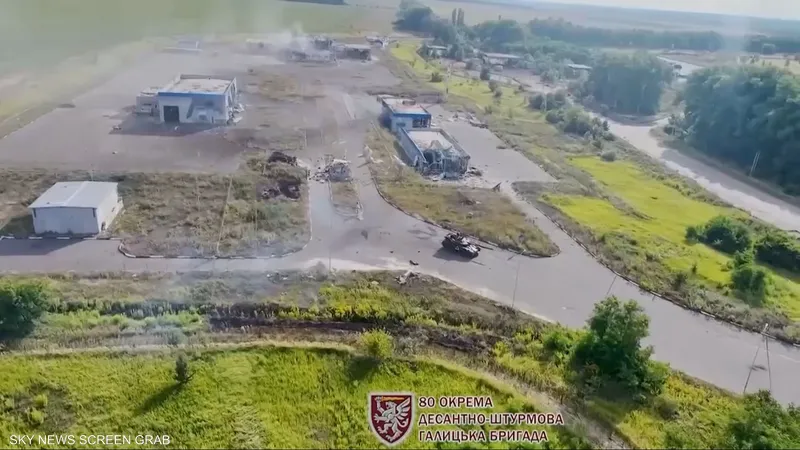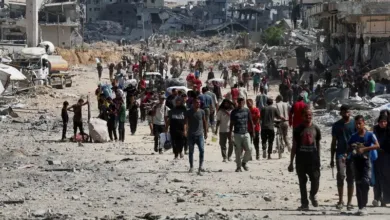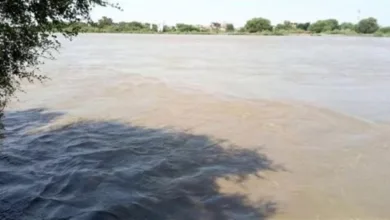Russian Forces Intensify Strikes Across 140 Locations in Ukraine

The Russian Ministry of Defense reported on Tuesday that Russian forces have strengthened their positions and successfully targeted Ukrainian military sites across 140 locations in various operational zones. The ministry highlighted a combination of air, artillery, and drone attacks aimed at disrupting Ukrainian defenses and neutralizing key military assets.
Expanded Russian Operations
According to the Russian Defense Ministry, operational-tactical aircraft, unmanned aerial vehicles (UAVs), missile units, and artillery groups targeted a range of Ukrainian positions. These included:
-
Observation points and launch sites for long-range drones.
-
Air defense radar stations and command posts.
-
Positions held by Ukrainian armed forces and foreign mercenary groups in 136 locations.
The ministry also claimed the destruction of a Ukrainian S-300 anti-aircraft missile launcher. Russian air defense systems reportedly intercepted five cruise missiles, five HIMARS multiple rocket launchers, and 230 drones, according to Russian news agency Sputnik.
Western and Southern Military Group Activities
The statement emphasized that units from the Western Military Group improved their positions along the frontlines and targeted Ukrainian personnel and equipment in multiple locations within Donetsk and Kharkiv regions.
Meanwhile, forces from the Southern Military Group reportedly seized more advantageous positions and targeted Ukrainian formations across several areas in the Donetsk People’s Republic. Russian sources reported over 240 Ukrainian casualties, including personnel, vehicles, field artillery, as well as the destruction of three electronic warfare stations and two supply depots.
Central Military Group Advances
Russian forces from the Central Military Group continued to advance into deeper Ukrainian defenses, striking personnel and equipment in multiple areas of the Donetsk People’s Republic. The ministry claimed that Ukrainian losses included approximately 515 soldiers, combat vehicles, and several pieces of field artillery.
These operations demonstrate the Russian military’s focus on suppressing Ukrainian operational capabilities while consolidating territorial control along key conflict zones.
Northern Military Group Operations
The Northern Military Group also continued to penetrate Ukrainian defensive positions, focusing on Sumy and Kharkiv regions. According to the ministry, these strikes resulted in:
-
Approximately 165 Ukrainian soldiers killed.
-
Destruction of tanks, combat vehicles, and field artillery.
-
Demolition of 11 ammunition and supply depots.
The ministry emphasized the systematic targeting of both personnel and infrastructure as part of a broader strategy to degrade Ukrainian military capacity across multiple fronts.
Strategic and Operational Implications
Military analysts note that the scale and coordination of these operations reflect a multi-pronged approach, integrating air power, artillery, and electronic warfare capabilities. By striking a wide array of targets, Russian forces aim to disrupt command and control, limit Ukrainian mobility, and diminish the effectiveness of drone operations.
The strikes also demonstrate the extensive use of modern intelligence and surveillance systems to identify high-value targets, ensuring precision and minimizing unintended damage. This approach aligns with contemporary doctrines emphasizing targeted operations and operational efficiency in modern warfare.
Regional and International Reactions
The escalation of Russian military operations has attracted significant international attention. Observers are closely monitoring the situation due to the potential humanitarian impact and the broader geopolitical ramifications of intensified conflict.
Ukrainian authorities have not independently confirmed the Russian claims, and reports from both sides often contain conflicting figures regarding casualties and damage. Nevertheless, the scale of reported strikes indicates ongoing high-intensity operations across multiple regions.
International organizations and neighboring countries continue to call for restraint and dialogue, emphasizing the need to protect civilians and adhere to international humanitarian law amidst the ongoing hostilities.
Humanitarian Concerns
The reported strikes raise serious humanitarian concerns, particularly in densely populated areas of Donetsk and Kharkiv. While the Russian Defense Ministry emphasizes targeting military assets, experts warn that extended bombardments can lead to civilian casualties, disruption of essential services, and displacement of local populations.
Human rights organizations have called for transparent reporting of military operations and for the protection of non-combatants, emphasizing that large-scale strikes in populated regions must comply with international standards.
Summary of Russian Military Claims
To summarize, according to Russian sources:
-
Western Military Group: Targeted Ukrainian forces in Donetsk and Kharkiv.
-
Southern Military Group: Struck Ukrainian positions in Donetsk, claiming 240+ Ukrainian casualties and destruction of supply depots.
-
Central Military Group: Advanced into Donetsk defenses, reportedly killing 515 Ukrainian soldiers.
-
Northern Military Group: Penetrated Ukrainian lines in Sumy and Kharkiv, claiming 165 Ukrainian casualties and destruction of 11 supply depots.
These claims indicate a comprehensive operational campaign across multiple regions, combining air, artillery, and electronic warfare to maintain momentum against Ukrainian forces.
The Russian Ministry of Defense reports indicate an extensive military campaign targeting Ukrainian positions across 140 locations, utilizing a blend of air strikes, artillery, and drone attacks. While these claims remain subject to verification, the scale of operations highlights the ongoing intensity of the conflict in Ukraine.
The current developments underscore the complexity of the war, where territorial control, intelligence operations, and strategic targeting play pivotal roles in determining the course of hostilities. As fighting continues, both humanitarian concerns and international diplomatic efforts will remain central to discussions about the conflict’s trajectory.




